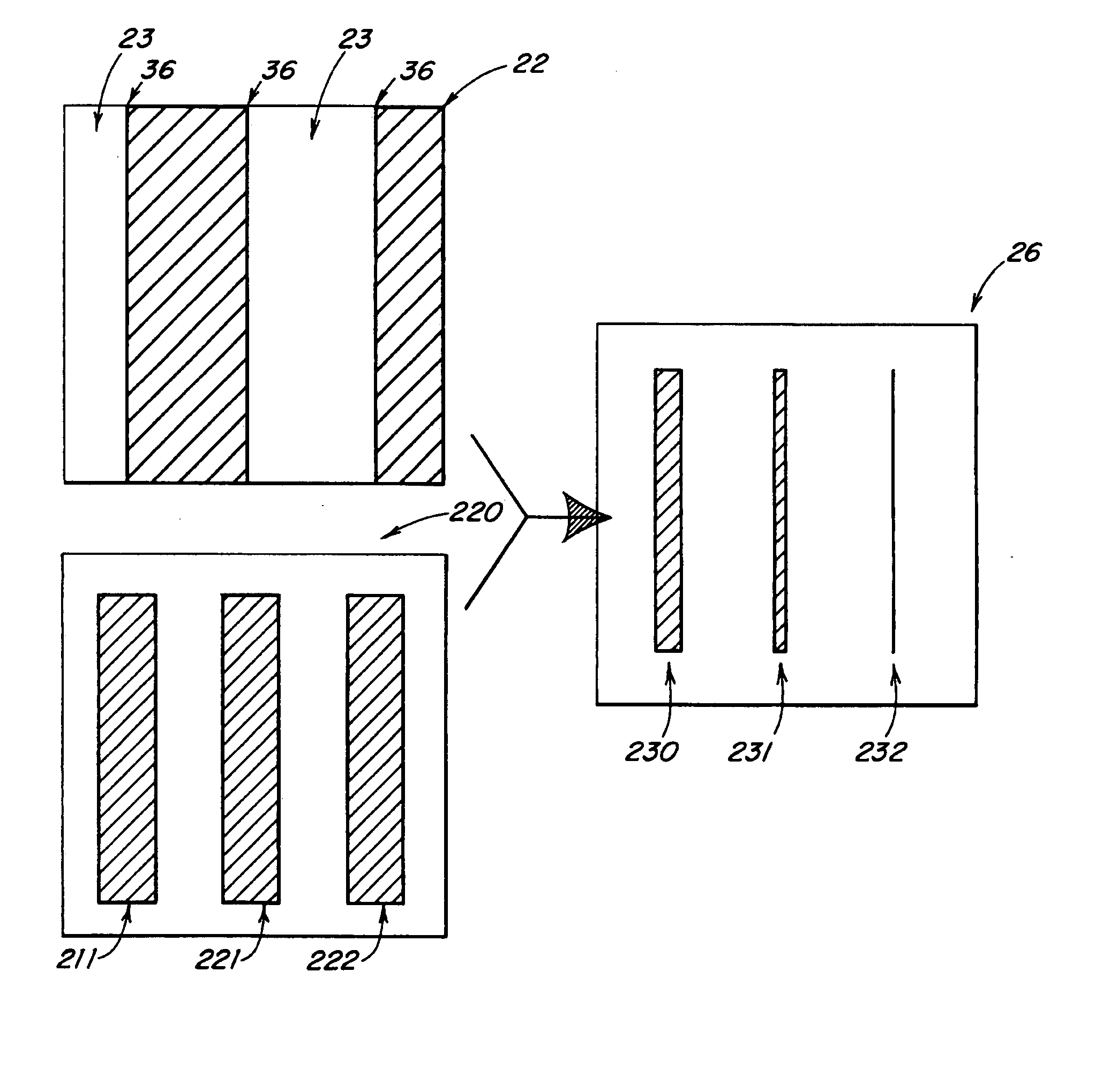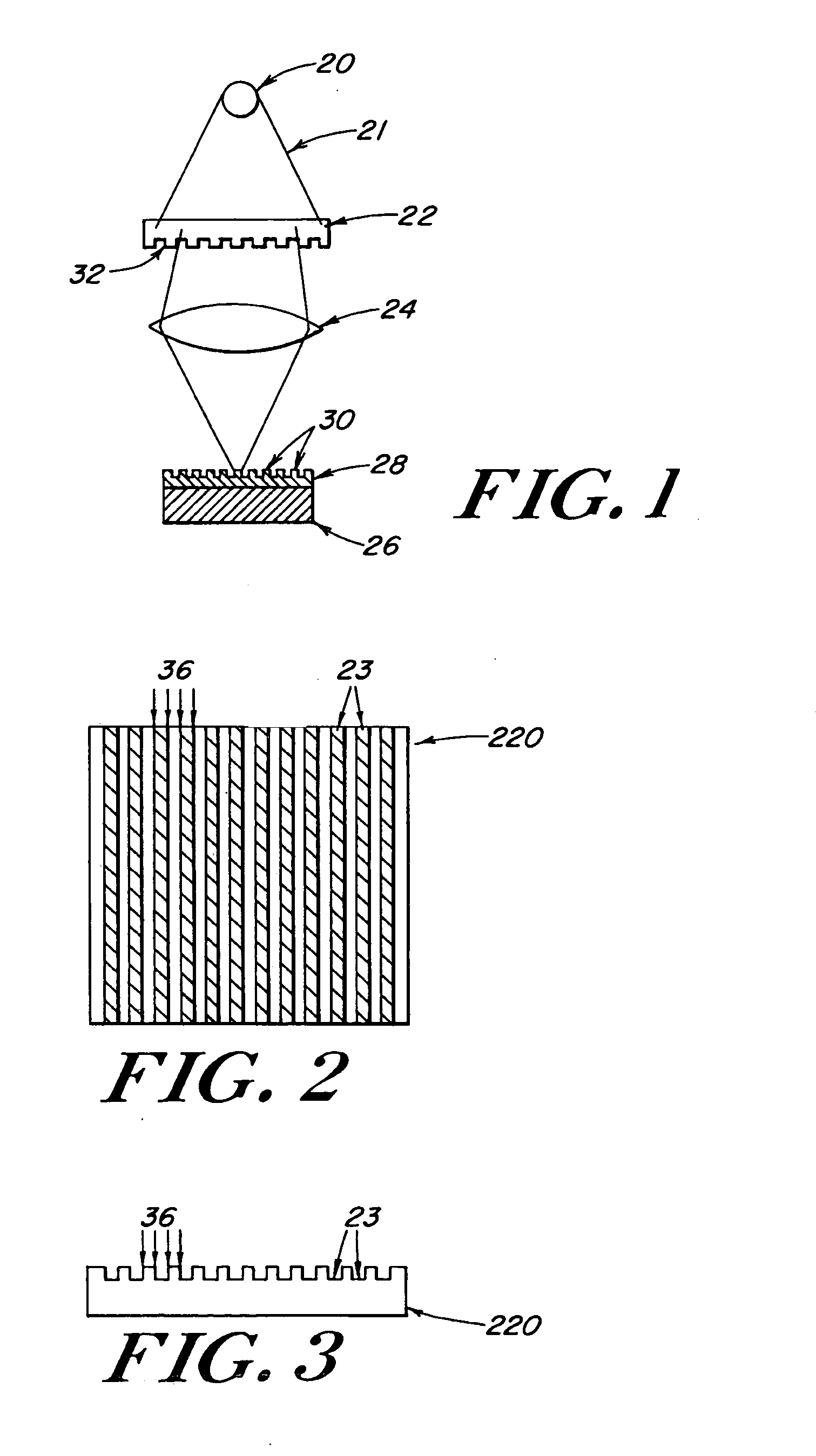Method and system of lithography using masks having gray-tone features
a technology of masks and graytones, applied in the field of fabrication methods, can solve the problems of limited resolution of optical steppers, high cost of lenses with very high numerical apertures ("na") approaching 0.9 to 1.0, and further limited
- Summary
- Abstract
- Description
- Claims
- Application Information
AI Technical Summary
Benefits of technology
Problems solved by technology
Method used
Image
Examples
Embodiment Construction
[0079] The present invention is directed to an imaging approach that overcomes the limitations of the conventional techniques, and confers a number of advantages. It addresses the problems of optical proximity and spatial frequency effects while maintaining the resolution-enhancement performance required by sub-wavelength lithography. Moreover, the present invention addresses the problems associated with lithographically defining features with locally variable critical dimension. The present invention also provides local control of the effective exposure dose that defines the critical dimension of the feature so that a wide variety of small features can be imaged without the need for chrome regulators or additional exposures.
[0080] In the following description, the phrase, "lines," refers to either the trenches or the raised areas; e.g., plateaus; on a wafer. Moreover, the phrase, "contacts," refers to either the holes or pillars on a wafer. The described photoresists may either be ...
PUM
| Property | Measurement | Unit |
|---|---|---|
| wavelength | aaaaa | aaaaa |
| optical simulation | aaaaa | aaaaa |
| width | aaaaa | aaaaa |
Abstract
Description
Claims
Application Information
 Login to View More
Login to View More - R&D
- Intellectual Property
- Life Sciences
- Materials
- Tech Scout
- Unparalleled Data Quality
- Higher Quality Content
- 60% Fewer Hallucinations
Browse by: Latest US Patents, China's latest patents, Technical Efficacy Thesaurus, Application Domain, Technology Topic, Popular Technical Reports.
© 2025 PatSnap. All rights reserved.Legal|Privacy policy|Modern Slavery Act Transparency Statement|Sitemap|About US| Contact US: help@patsnap.com



